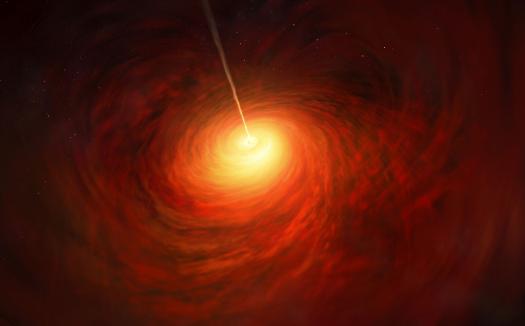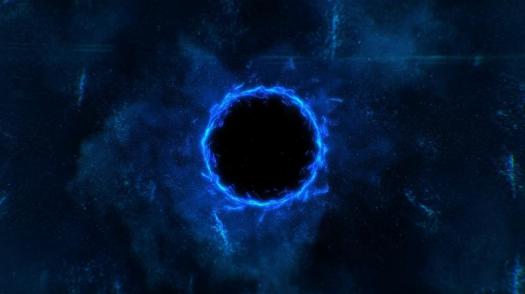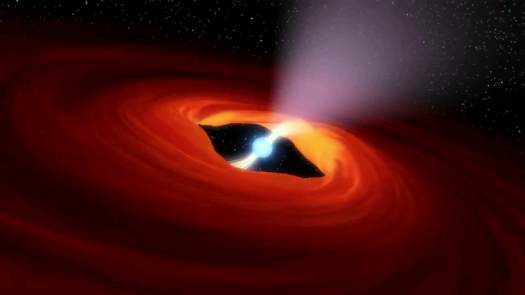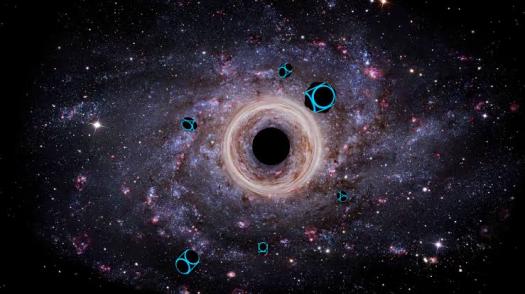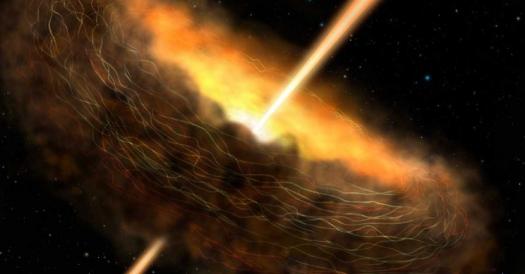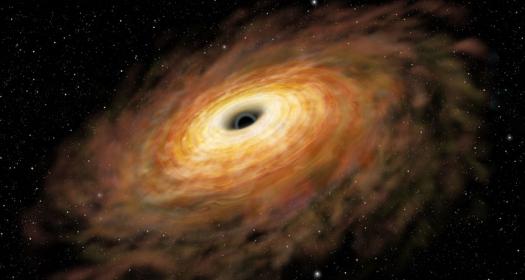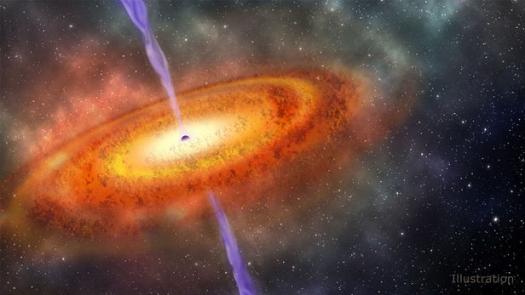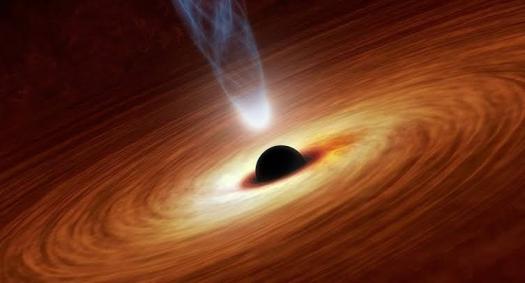Test Yourself About Black Hole!

Black hole is the spot in the outer space that is characterised by a very strong gravitational acceleration. The gravitational acceleration is so strong that even the minutes particle can not escape from this region. Among other laws, the relativity principle explain this phenomenon. Interestingly, the black hole reflects no light. How much do you know about it?
- 1.
What is the boundary of the region from which no escape is possible called?
- A.
Event horizon
- B.
Black hole
- C.
Event spot
- D.
Dark spot
Correct Answer
A. Event horizonExplanation
The boundary of the region from which no escape is possible is called the event horizon. This is the point of no return for anything that enters the gravitational pull of a black hole. Once an object crosses the event horizon, it is trapped within the black hole's intense gravitational field and cannot escape. The event horizon is a defining feature of black holes and plays a crucial role in understanding their behavior and properties.Rate this question:
-
- 2.
What century saw the gravitational field responsible for black hole explained?
- A.
12th century
- B.
16tyh century
- C.
19th century
- D.
18th century
Correct Answer
A. 12th century -
- 3.
Why is the black hole regarded as a black body?
- A.
It absorbs light
- B.
It reflects light
- C.
It blocks the path oflight from the sun
- D.
It is opaque
Correct Answer
A. It absorbs lightExplanation
A black hole is regarded as a black body because it absorbs light. Unlike other objects in space, a black hole has such a strong gravitational pull that nothing, including light, can escape from it. As a result, the black hole appears black and does not reflect or emit any light. This property of absorbing all light is why it is referred to as a black body.Rate this question:
-
- 4.
When was the first modern solution of general relativity for the black hole found?
- A.
1917
- B.
1823
- C.
1911
- D.
1991
Correct Answer
A. 1917Explanation
In 1917, the first modern solution of general relativity for the black hole was found. This breakthrough in understanding the nature of black holes was a significant development in the field of astrophysics. It provided a mathematical framework to describe the behavior and properties of black holes, leading to further advancements in the study of these enigmatic astronomical objects.Rate this question:
-
- 5.
Who found a modern solution of general relativity for the black hole problem?
- A.
Paul Graham
- B.
John Brass
- C.
Erwin Mars
- D.
Karl Schwarzchild
Correct Answer
D. Karl SchwarzchildExplanation
Karl Schwarzschild is credited with finding a modern solution to the black hole problem in general relativity. His solution, known as the Schwarzschild metric, describes the geometry of spacetime around a non-rotating and non-charged black hole. This solution provided a mathematical framework for understanding the properties and behavior of black holes, including the existence of an event horizon and the singularity at the center. Schwarzschild's work laid the foundation for further research and exploration of black holes in the field of astrophysics.Rate this question:
-
- 6.
Who interpreted the solution for the black hole problem?
- A.
Eric Walter
- B.
Clark Peterson
- C.
Timmy Jaecke
- D.
David Finkelstein
Correct Answer
A. Eric Walter -
- 7.
When was the solutionof the black hole problem made?
- A.
1928
- B.
1955
- C.
1958
- D.
1671
Correct Answer
A. 1928Explanation
The solution to the black hole problem was made in 1928.Rate this question:
-
- 8.
When was neutron stars discovered?
- A.
1961
- B.
1966
- C.
1956
- D.
1967
Correct Answer
A. 1961Explanation
Neutron stars were discovered in 1961. This discovery was made by a graduate student named Jocelyn Bell Burnell and her advisor Antony Hewish. They observed regular radio pulses coming from a specific location in the sky, which they initially thought might be signals from extraterrestrial intelligence. However, further analysis revealed that these signals were actually coming from a rapidly spinning neutron star, which became known as a pulsar. This groundbreaking discovery revolutionized our understanding of stellar remnants and earned Hewish the Nobel Prize in Physics in 1974.Rate this question:
-
- 9.
Who discovered the neutron stars?
- A.
Jocelyn Burnell
- B.
Wick Yellow
- C.
Thomas Erikson
- D.
Billy Weiss
Correct Answer
A. Jocelyn BurnellExplanation
Jocelyn Burnell is credited with the discovery of neutron stars. In 1967, while working as a graduate student, she detected regular radio pulses coming from a region of the sky. These pulses were later identified as coming from a rapidly rotating neutron star, known as a pulsar. This groundbreaking discovery revolutionized our understanding of stellar remnants and earned Burnell significant recognition in the field of astrophysics.Rate this question:
-
- 10.
When was the first time a direct image of the black hole published?
- A.
10 April 2019
- B.
23 April 2016
- C.
11 March 2009
- D.
11 June 2007
Correct Answer
A. 10 April 2019Explanation
The first direct image of a black hole was published on 10 April 2019. This breakthrough was made possible by the Event Horizon Telescope (EHT), which is a network of telescopes around the globe that work together to create a virtual telescope the size of the Earth. The image captured the supermassive black hole at the center of the galaxy M87, providing visual evidence of the existence of these mysterious cosmic objects.Rate this question:
-
Quiz Review Timeline +
Our quizzes are rigorously reviewed, monitored and continuously updated by our expert board to maintain accuracy, relevance, and timeliness.
-
Current Version
-
Aug 07, 2024Quiz Edited by
ProProfs Editorial Team -
Jun 06, 2019Quiz Created by
Gregorynaomi
 Back to top
Back to top



